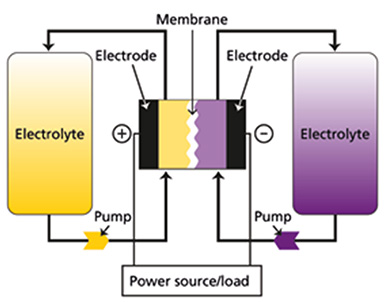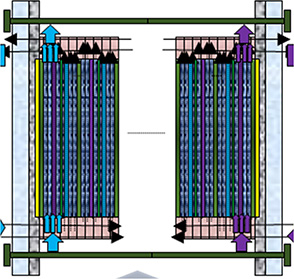Technology
What’s XRB
Expandable Redox Battery (XRB). Expandable means that it is possible to expand by attaching multiple cathodes and anodes of each unit cell consisting the stack, and also, depending on the battery usage as a Redox Battery Platform, it can be configured in a stack to perform charge/discharge operation like a lithium-ion battery or be used for long-duration ESS through an external electrolyte tank just like conventional flow batteries.
XRB’s unit cell structure is modular and expandable platform, enabling stack design and manufacturing for each rated voltage and energy capacity depending on the use.
Therefore, in large-capacity battery systems, XRB can reduce costs in the stack sector compared to the existing redox flow batteries’ multiple repetitive single-cell configuration.

- Fully scalable
- Well developed structure
- Low energy density
- Complicated flow system
- Expensive installing cost

- Fully scalable
- Well developed structure as a Redox Battery Platform
- High energy density
- No(SVRB) or less BOP required (Pump, Tank, Pipe, etc.)
- Low install cost (Short delivery)
- No(SVRB) or less pump power required (High energy efficiency)


